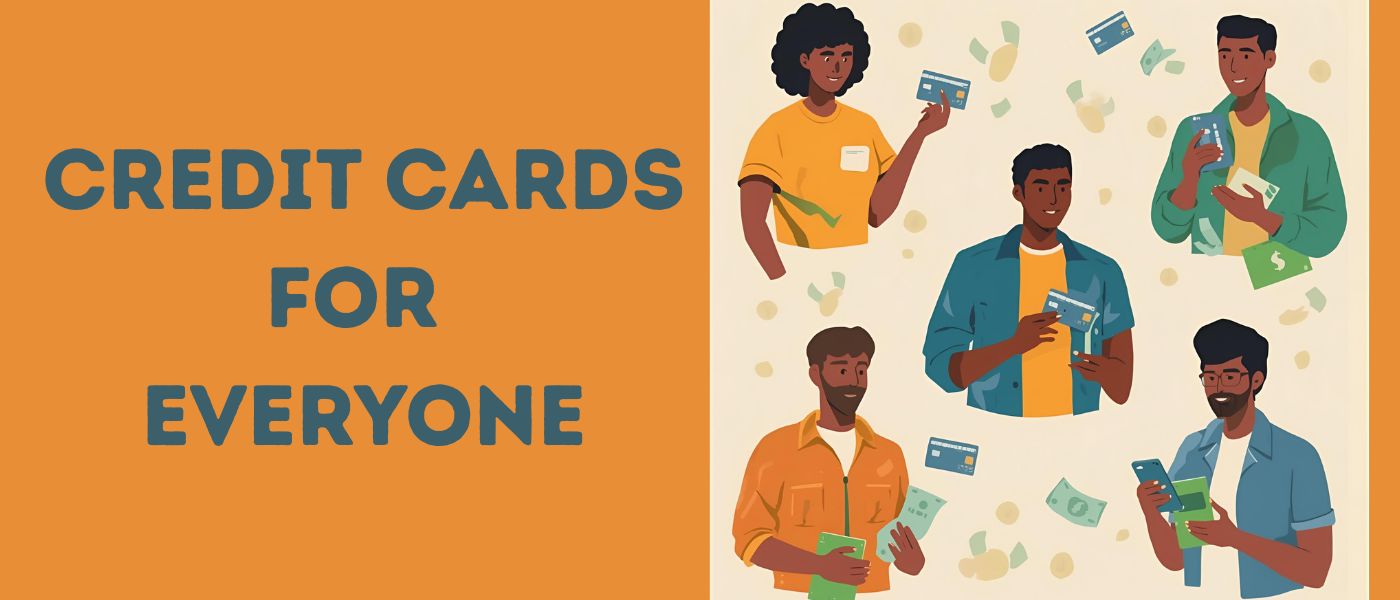For a long time in India, credit cards carried a reputation: they were seen as luxury items for the rich, NRIs, or frequent flyers who spent heavily. In small towns, even today, people often ask, “Why do I need a credit card when I already have UPI or debit?”
But fast forward to 2025, and the story has changed dramatically. Credit card penetration in India has crossed 100 million active users, and the growth isn’t just in metros. Thanks to fintech innovations, lifetime free cards, and RBI’s digital-first initiatives, credit cards have become daily-use financial tools for middle-class Indians, gig workers, and young professionals.
From getting discounts on Flipkart’s Big Billion Days to converting a smartphone purchase into EMI, credit cards now save money rather than signal wealth.
From Status Symbol to Smart Tool: The Shift
- Earlier (1990s–2000s): High joining fees, paper-heavy applications, and restricted eligibility meant only high-income professionals in metros could qualify.
- Now (2020s–2025):
- Digital onboarding via Aadhaar + PAN in minutes.
- Lifetime free cards from banks like IDFC, AU Small Finance, and SBI.
- Co-branded cards with Flipkart, Amazon, Swiggy, Ola, etc., targeting everyday spending.
- Low income thresholds (₹15,000–₹20,000/month).
This evolution has made credit cards accessible across Tier-2 and Tier-3 cities, where debit and UPI once dominated.
Why Credit Cards Make Sense for Everyone in 2025
- Cashbacks & Rewards Add Up
- A middle-class family spends ~₹25,000/month on groceries, utilities, and online shopping. With 2–5% cashback/rewards, that’s ₹6,000–₹10,000 saved annually.
- Builds a Credit Profile
- Paying on time builds a CIBIL score, essential for home loans, education loans, or car financing. Without a credit history, even salaried professionals struggle with approvals.
- Short-Term Credit Buffer
- 45–55 days of interest-free period lets you manage cash flow smoothly — no need to dip into emergency savings.
- Safer than Debit Cards
- Credit card fraud liability is capped if reported promptly, unlike debit cards where money is instantly debited.
- EMIs Made Easy
- From ₹15,000 phones to ₹1 lakh appliances, no-cost EMI options through cards reduce financial stress.
- Perks Beyond Shopping
- Free airport lounge access, fuel surcharge waivers, travel insurance, and dining discounts — once luxury perks, now common across mid-range cards.
RBI & Fintechs: Driving Democratization
- RBI Push:
- UPI-credit card linkage on RuPay cards has made small-ticket credit easier.
- Stricter guidelines on transparency protect first-time users from hidden charges.
- Fintech Role:
- Apps like Slice, Uni (before pivot), and Fi Money popularized small-ticket credit among younger users.
- Partnerships between fintechs and banks have brought low-limit, digital-first cards (₹10,000–₹25,000 limits) to students and gig workers.
Together, these changes dismantle the myth that cards are only for high earners.
Affordable & Beginner-Friendly Cards in 2025
| Card | Best For | Annual Fee | Key Benefits |
|---|---|---|---|
| HDFC MoneyBack+ | Online shopping, beginners | ₹500 (waived on ₹50k spend) | 2x rewards on Amazon/Flipkart |
| Axis Flipkart Card | Flipkart loyalists | ₹500 | 5% cashback on Flipkart, 1.5% flat on others |
| SBI SimplyCLICK | E-commerce spends | ₹499 | 10x rewards on Amazon, BookMyShow, Zomato, etc. |
| IDFC FIRST Millennia | Everyday use | Lifetime Free | 1.5–2% cashback, fuel & dining benefits |
| AU Small Finance Altura | Low-income first-time users | ₹199 | Cashback on groceries, utilities, digital spends |
Check out all the credit cards here
Common Credit Card Myths Busted
Myth: Credit cards are only for the rich
Fact: Many entry-level cards start at incomes of ₹20,000/month or less.
Myth: Credit cards = debt trap.
Fact: Only if you don’t pay bills. Paying in full every month = 0% interest.
Myth: UPI makes credit cards unnecessary.
Fact: UPI is convenient, but cards give rewards, cashbacks, and EMI options — things UPI doesn’t.
Myth: Debit cards are safer
Fact: Actually, credit cards have stronger fraud liability protection.
Pitfalls First-Time Users Should Avoid
- Pay Minimum Due Trap – Always pay in full, not just the minimum amount.
- Overusing Credit Limit – Try to keep utilization below 30% of limit for a healthy credit score.
- Ignoring Annual Fees – Pick lifetime free or fee-waiver cards to avoid unnecessary charges.
- Multiple Applications at Once – Too many hard inquiries can drop your credit score.
In 2025, credit cards in India are no longer the privilege of the wealthy — they’re everyday financial allies. Whether you’re a student building your first credit score, a salaried professional saving on groceries, or a small business owner needing a short-term credit cushion, there’s a card designed for you.
The key lies in responsible use: spend within your means, pay bills on time, and treat the credit card as a tool, not free money. Used wisely, a credit card isn’t a luxury — it’s a stepping stone to financial freedom.

